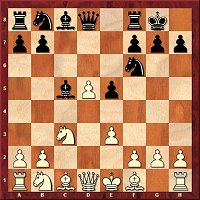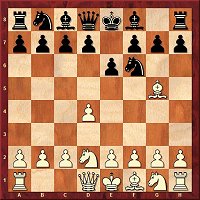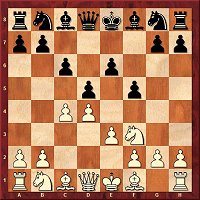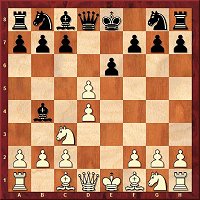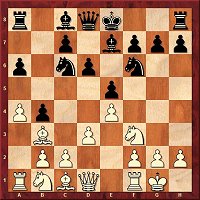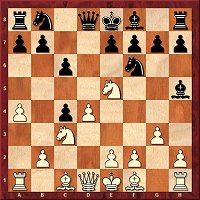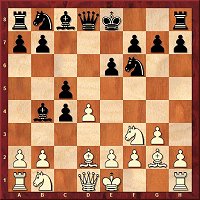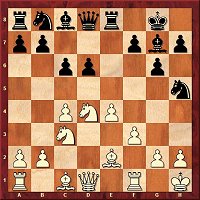|

| Intro
In his introductory video Grandmaster Karsten Müller shows you what most impressed him when he looked through the contents of the new DVD and at the same time gives an overview of the offers on DVD. Starting with Caruana's brilliancy against Aronian at the Grand-Slam finals, all the way through to Rainer Knaak's opening trap, which this time comes from a surprising system against the Queen's Gambit 1.d4 d5 2.c4 Bf5. |
| 
| Tournament Highlights It takes Grandmaster Dorian Rogozenco half an hour to tell you just about the high points from the latest top tournaments. Rogozenco devotes his first video to the team tournaments in Istanbul and Eilat (from where he demonstrates, e.g., Nakamura’s victory over Kramnik). In his second video Rogozenco describes games from the FIDE Grand Prix in London (including Topalov-Kasimdzhanov) and from the Grand Slam finals (Carlsen-Anand). |
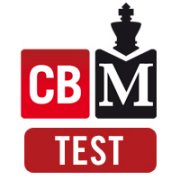
| Just Training... In this issue too, we have brought together all the games with training questions. A click on the icon on the left opens the relevant list with 56 games. These contain a total of 1841 training questions and you can score a maximum of 418 points. |
| 11.10.-17.10.2012 
Team SOCAR
with the trophy
| European Club Cup 2012 (Eilat) For a long time it appeared as though the team from St Petersburg would be able to defend the title they had won in the previous year. After five rounds and five victories they had a handsome lead over their rivals. But then Team SOCAR from Azerbaijan ended the series of wins for the Russians. Before the start of the 7th and final round four teams were in the lead with an equal number of points and these very teams were facing each other. SOCAR and St Petersburg won; at the finish SOCAR had their nose in front in view of their Sonneborn-Berger tiebreak score. |
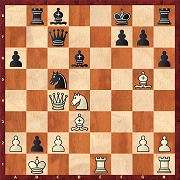
Volokitin,A - Mamedyarov,S
Position after 20...h6
| On their way the team of Radjabov, Mamedyarov, Topalov, Grischuk, Kamsky, Sutovsky etc. had got off to the classic bad start. That was a 2.5:3.5 defeat at the hands of the Israeli representatives Ashdod. Crucial for the shock were the defeats of Mamedyarov and Topalov. In Volokitin-Mamedyarov a sharp variation of the Najdorf was up for discussion and Volokitin was left holding the better end of the stick. In the position in the diagram on the left he reacted to 20...h6 with the amazing 21.Bd8. And after 21...Qxd8 22.Rhf1 Rb7 23.Bg6 f6 the game would have been all over after 24.Re3. But Volokitin, who has annotated the game on the DVD, overlooked this point, though he did win in the end with the help of another remarkable trick. |
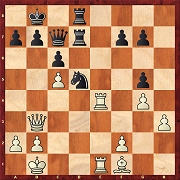
Topalov,V - Eljanov,P
Position after 27...Nd5
| And in Topalov-Eljanov the Ukrainian obtained a clear positional advantage in a side variation of the Slav with good down-to-earth chess. "...the black knight is clearly stronger then the bishop." In fact the black knight has just occupied a wonderful outpost on d5 - and yet, it is still not the best square. Where can it be even more effective? In his analysis Eljanov shows you the solution and explains the further course of the game, which he was able to win thanks to excellent technique in the rook ending.
|
 | Their thrashing of Tomsk by 5:1 secured victory in the cup for SOCAR in the final round. One of the four wins was contributed by Emil Sutovsky. The Israeli GM analyses his game against Khismatullin on the DVD and is unhappy, e.g., with the evaluations of his engine. “During the game, I thought White was about winning the game” – but Houdini merely shows the bald 0.13... |
| 24.09.-13.10.2012 
Magnus Carlsen
King of Bilbao
| Grand Slam Final 2012 (Sao Paulo/Bilbao) The "double tournament" in Sao Paulo in Brazil and in Bilbao in the Basque country had two winners: Fabiano Caruana was the man of the first rounds, but in the return leg in Bilbao Magnus Carlsen completely cleared up his arrears. The two stars finished the tournament side by side - well ahead of World Champion Anand. There was then simply only one winner in the tiebreak of two blitz games. Carlsen retained his title by 2:0. |
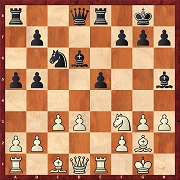
Carlsen,M - Caruana,F
Position after 15...b5
| Both of these top players have annotated one of their best games from the Grand Slam finals. The starting point for his hunt to catch up came for Magnus Carlsen in the first game of the return leg - against the Italian who had a clear lead.
What was unusual, though not atypical of the Norwegian, was his choice of how to do so: Carlsen side-stepped the theory of the French Defence by playing 2.d3. He was successful, because soon after the opening the Italian could not find the correct plan. In the position on the board the Italian played 15...b5 - a mistake, as Carlsen points out in his analysis. Because the counter 16.a4 fixes all the black pawns on dark squares. Why that is a disadvantage for Black was demonstrated by Carlsen with his fantastic endgame technique - and in his analysis on the DVD! |

Caruana annotates
Caruana,F - Aronian,L
| In the penultimate round, while Carlsen was bringing the world champion down to earth with a Sicilian with 3.Bb5, Fabiano Caruana was victorious in an extremely sharp game against Aronian. The complications started after the Armenian's piece sacrifice 21...Nxg4. But only a few moves later Caruana started on his own attack on the king and after only a few moves obtained a winning position. On no account must you miss this fantastic attacking game! |
| 21.09.-03.10.2012 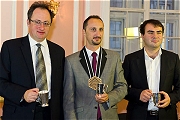
| FIDE GP London 2012 The spectators at the first tournament in the new Grand Prix cycle were offered a neck-and-neck race. At the end there were three players on top Veselin Topalov, Boris Gelfand and Shakhriyar Mamedyarov. On the DVD you will find all the games from London, many of them annotated. Let us put you in the mood with a brief look at one game selected by each of the three winners. |
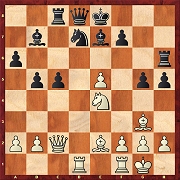
Mamedyarov,S - Giri,A
Position after 19...Be7
| Shakhriyar Mamedyarov managed a nice miniature in round three against the unfortunate Anish Giri. The Azeri top grandmaster set his opponent some difficult decisions to take right in the opening and provoked him into carrying out the - thematically correct - advance 12...c5 at the wrong moment. Mamedyarov's counter 13.d5 was the start of the destruction of Black's centre. In the position in the diagram he sealed the fate of the game with 20.Bxh5 Rxh5 21.e6. Giri resigned since 21...fxe6 is followed by 22.Nd6+ Kf8 23.Qg6 and 21...Bc6 fails to 22.exd7+ Bxd7 23.Rd5 Qa5 24.Rxd7 Kxd7 25.Qd1+ Kc6 26.Qxh5. |
 | In his first round game against Nakamura Boris Gelfand not only proved that (partly thanks to the WCh match against Anand) he has an excellent arsenal of opening weapons, but he also demonstrated once more in time trouble before move 40 that he has nerves of steel. With 40...Rf5! he obliged his opponent to exchange on f5 and in doing so he obtained the winning pair of passed pawns. |

Topalov,V - Dominguez,L
Position before 32.Bxf6
| Veselin Topalov came up with an unusually late piece sacrifice in his encounter with the Cuban grandmaster Leinier Dominguez. In the position in the diagram on the left he struck out with 32.Bxf6. Next came 32...Bxf6 and after 33.Qxc6 a critical point in the game had been reached. Dominguez immediately reduced material with 33...Bxe5, but after 34.Qxe8+ Bxe8 35.fxe5 Black is on a loser. The remaining and extra black piece on d8 is powerless against the linked white passed pawns! Take a look at Topalov's winning technique and the wonderful march of the white king which takes it over almost the whole board! |
28.08.-09.09.2012
 | Chess Olympiad Istanbul 2012 This is how we like to see the winners of a Chess Olympiad celebrating: being driven in an open car through the streets of rejoicing fans and being welcomes by the country's president in person. There is no question but that the reception accorded to the Armenian gold medal winners on their return was of olympic quality. For the third time within only three years Levon Aronian on first board had led his team to gold. The silver medal went to the probably frustrated Russians and bronze to the Ukraine.
|

Kramnik,V - Aronian,L
Position after 21.Nb3
| Armenia's top player only had to admit defeat on one occasion. And that was in the duel against the tournament favourites from Russia. Vladimir Kramnik annotates his victory over Aronian on the DVD. The Armenian tried out a relatively new idea in the Slav Defence, namely 7...g6 and 8...Bf5, but with precise play Kramnik managed to obtain a slight plus and active play on the queenside. A critical position was reached after Kramnik's 21.Nb3. Here 21...b6 22.Nd2 Qd7 23.Qb3 b5 24.Qd3 Ne7 was indicated, but after 25.Qa5 White has a clear positional advantage here too. Aronian played 21...Rc7, which turned out to be a mistake after Kramnik's counter 22.Na5 Rac8 23.Nxb7. Play through this top game from the Olympiad with the comments of the ex-world champion and enjoy the excellent way in which he won it! |
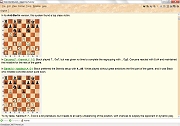
Opening Survey
by Mihail Marin
| You will find on the DVD over 3,300 games from the Chess Olympiad. GM Mihail Marin has analysed the most important games and in his openings survey he shows which new ideas have been tried out and what the trends are in, e.g., the Ruy Lopez with 4.d3, in the Exchange Variation of the Queen's Gambit or in the Nimzo-Indian (for example against Naiditsch Kramnik gave the preference to 4.Nf3 compared to "his" 4.Qc2). In any case, you will find material here for your own repertoire! |
 | Polish player Radoslaw Wojtaszek was on board one for his team one of the top scorers in the tournament and achieved the fourth best performance. On the DVD he annotates his victory over Radjabov, in which the Pole was able to come up with an innovation on the 13th move (13.dxc6) of the King's Indian Main Variation with 9.b4. "At first glance it does not look especially dangerous for Black, but the position is very tactical and in addition I was hoping for the effect of surprise" writes Wojtaszek in his analysis. He was successful, as you can see from the further course of Wojtaszek,R - Radjabov,T. |

Ivanchuk,V - Wang Hao
Position after 23...Qc6
| On the DVD you will find a host of high class games, some of which annotated by the players themselves, for by Pavel Eljanov, the two Kosintsevas, Bartlomiej Macieja, Evgeny Postny, Emil Sutovsky, Boris Avrukh and Igor Stohl. A remarkable combination from the final round is on display in the game Ivanchuk-Wang Hao. After 23...Qc7-c6 Ivanchuk led into the final combination with 24.gxh7+. The game continued 24...Kxf7 25.Rf1+ Ke7 26.h8=Q Rxh8 27.Qg7+ Kd6 and after dxe6+ the Chinese player resigned in view of the threats of mate which could no longer be parried. |

Position after 5...Nc6
White's only good move is one which protects the pawn on d4: 6.e3 or 6.Nf3. See Opening Trap
| From the opening trap to the endgame study Training in ChessBase Magazine starts with the very first moves and takes in all the phases of a game of chess. The 11 up-to-date openings articles with numerous ideas and suggestions for your repertoire can also be found above among the links. This time Rainer Knaak's Opening Trap (including a Fritztrainer video) contains a trap in the Baltic Defence (1.d4 d5 2.c4 Bf5 - D06). You will also find in video format the openings articles by Alexei Shirov (Semi-Slav), Leonid Kritz (Sicilian Rossolimo Variation) and Robert Ris (London System). These videos can be found in the Openings Videos column. In Daniel King's long running favourite Move by Move the subject is a game with the Najdorf Variation. And in the Tactics column (subject: the killer instinct) and the Endgame (subject: the king must be activated) Oliver Reeh and Karsten Müller have once more collected for you all that is best from recent tournament practice. |
| | |
























